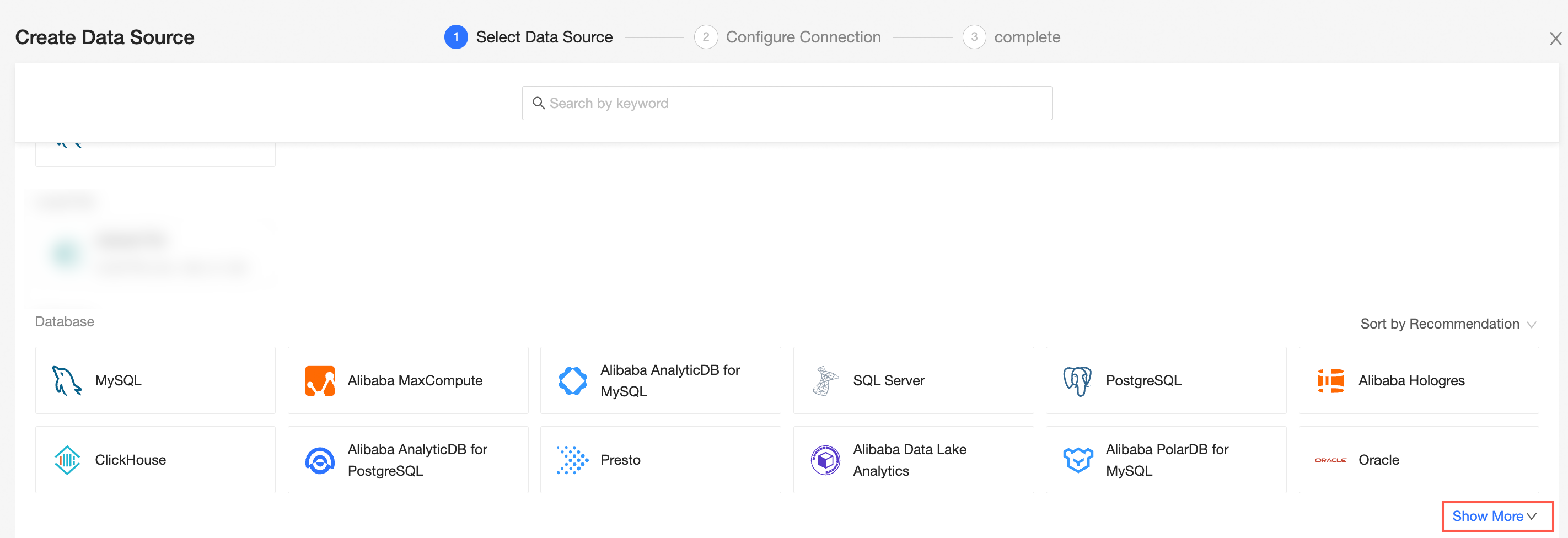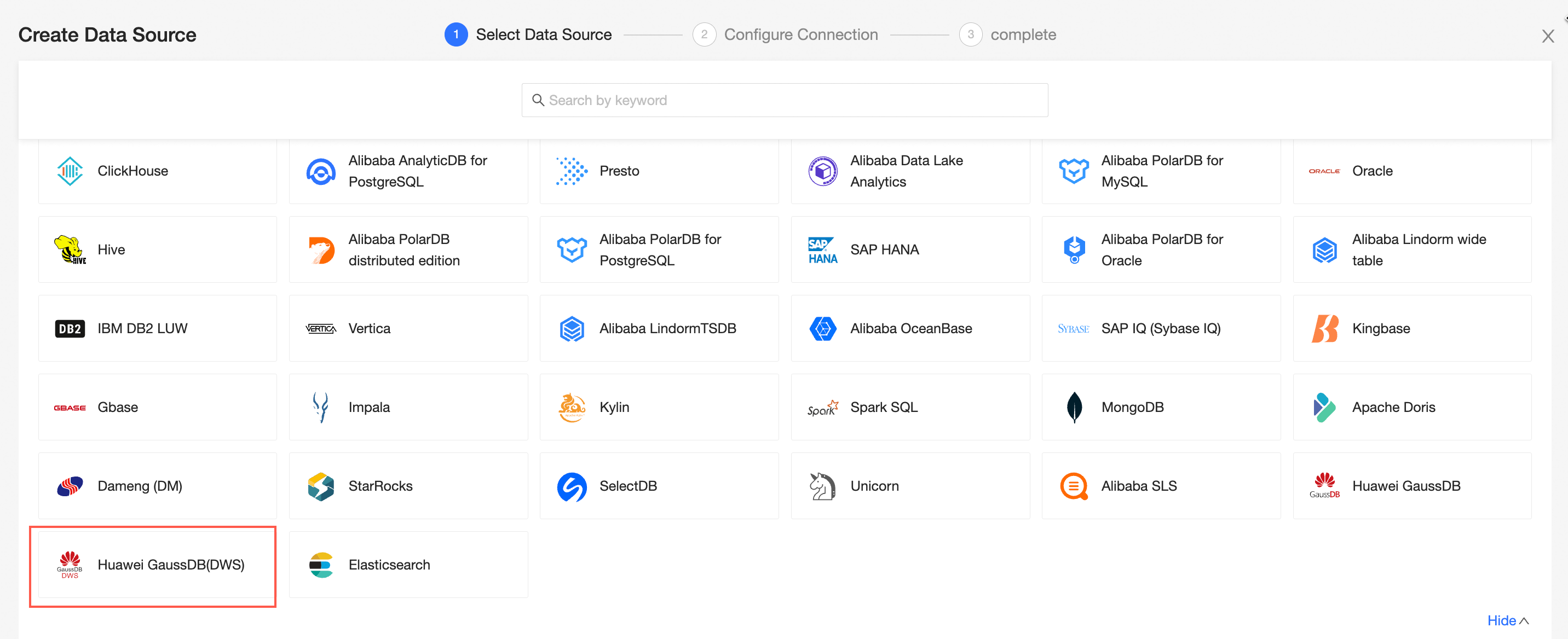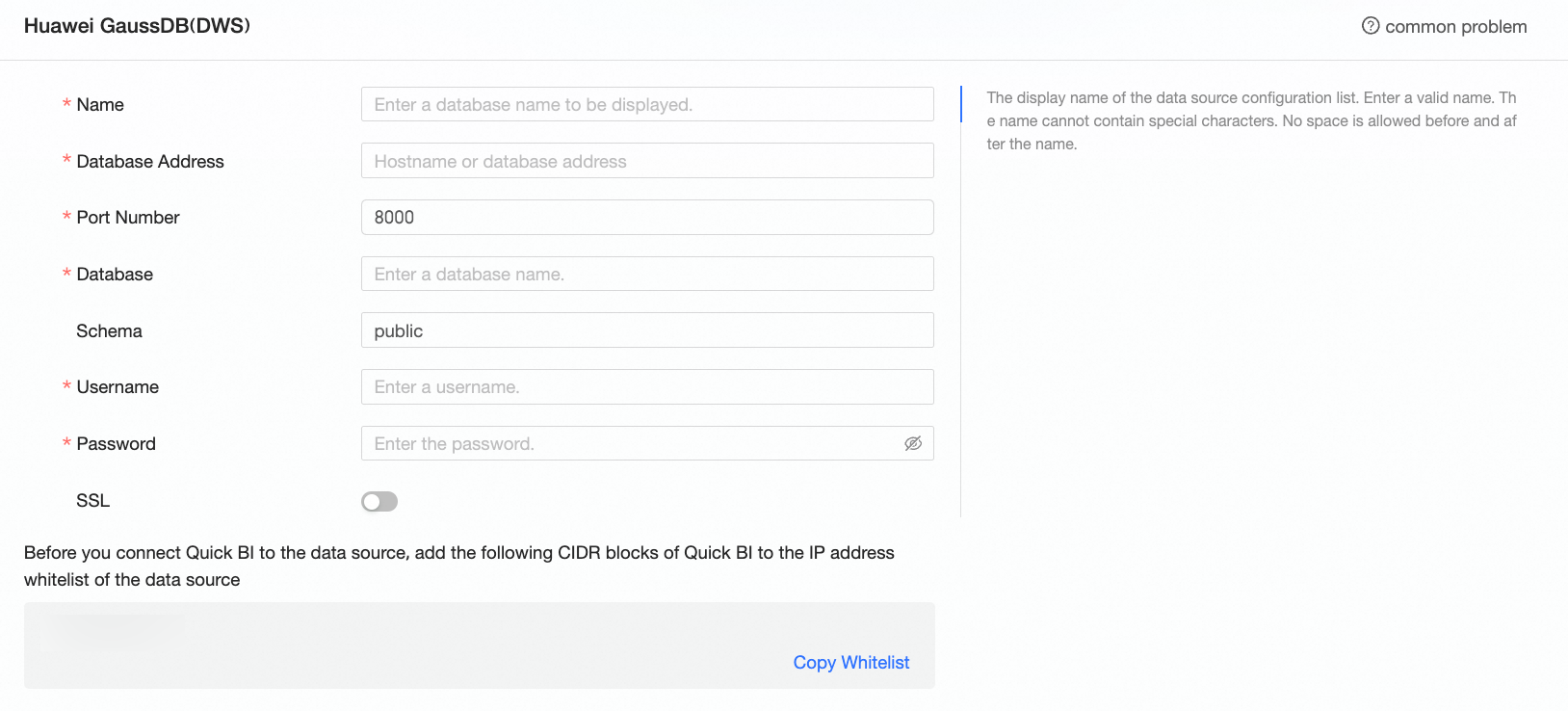This topic explains how to add a Huawei GaussDB(DWS) data source in Quick BI, enabling you to connect to the Huawei GaussDB(DWS) database and analyze data within Quick BI.
Procedure
Add to the whitelist.
Before connecting to Huawei GaussDB(DWS), you must add the IP address of Quick BI to the whitelist of Huawei GaussDB(DWS).
Verify the data source connection and create a data source.
Log on to the or the international Quick BI console.
Follow the instructions in the figure below to add a data source.
Access the data source creation interface via the data source creation entry.
Click to show more.

Select the Huawei GaussDB(DWS) data source.

In the Configure Connection dialog box, configure the connection settings according to your business scenario.

Name
Description
Display Name
The display name in the data source configuration list.
The name cannot contain special characters or start or end with spaces.
Database Address and Port
The external network address where the Huawei GaussDB(DWS) database is deployed.
Log on to the Huawei Cloud Management Console. Bind the Elastic IP Address (EIP) on the instance basic information page and view it on the connection management page. For more information, see obtain the cluster connection address.
Database
The name of the database to be connected.
Schema
The schema of the database that you want to access.
Username and Password
The username and password to log on to the Huawei GaussDB(DWS) database.
NoteEnsure that the user who logs on to the Huawei GaussDB(DWS) database has the create, insert, update, and delete permissions on the tables in the database.
SSL
If the target data source has SSL configured, you can select the SSL security protocol to protect data security.
Click Connection Test to verify the data source connectivity.

Once the test is successful, click OK to finalize the data source addition.
What to Do next
After creating a data source, proceed with dataset creation and data analysis.
Incorporate data tables or custom SQL statements from the Huawei GaussDB(DWS) data source into Quick BI. For more information, see create and manage datasets.
Create visualization charts and perform data analysis. For more information, see create a dashboard and visualization chart overview.
Engage in drilling and comprehensive data analysis. For more information, see drilling settings and display.